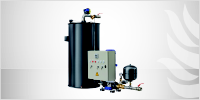Because water is life

Compliance with the drinking water ordinance in fire protection
Fire extinguishing and extinguishing water systems are devices for preventive fire protection and are used to fight fires to save and protect people. They are usually required by the fire protection authorities with reference to the applicable building law. If such systems are connected directly to the drinking water installation, they are subject to special requirements in order to maintain the drinking water quality. DIN 1988 Part 600 already regulates the design and connection of drinking water installations in connection with fire extinguishing and fire protection systems. The new Drinking Water Ordinance (TrinkwV), which came into force on November 1st, 2011, exacerbates the situation.
drinking water quality
In everyday life, fire extinguishing and fire protection systems are used very rarely or not at all during their service life – with the exception of annual maintenance work or possible test exercises. If they are constantly filled with water and are not flushed through sufficiently, the water will stagnate. There is a risk that the water will become contaminated and thus become hygienically unsafe. If such systems are connected to the drinking water network, they pose a threat to the quality of the drinking water and thus to human health.
Drinking water ordinance and fire protection
On the fire protection side, the Drinking Water Ordinance affects the operators of objects with wall hydrants. Operators must ensure that water that is not of drinking water quality is not allowed to flow back into the drinking water network. This applies to rainwater, as well as to water from heating systems, but also from extinguishing pipes. By installing a so-called “safety device”, the operator must ensure that drinking water is separated from non-potable water. Together with its partners, Jockel has competent and economical solutions for such requirements.
